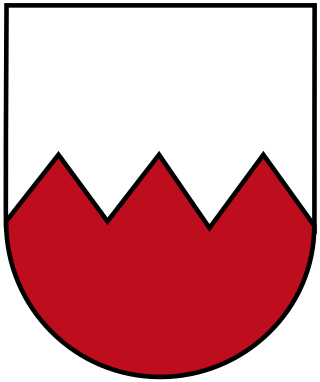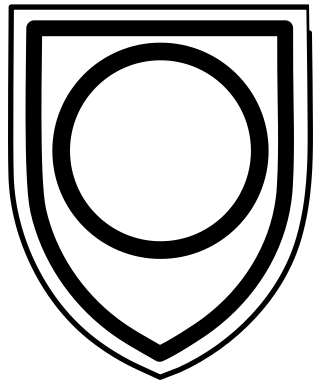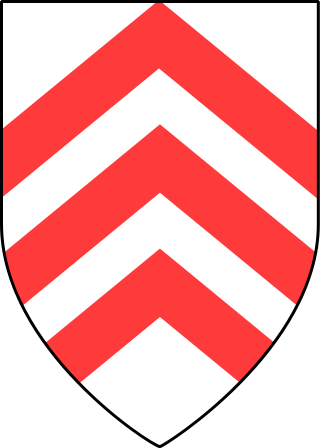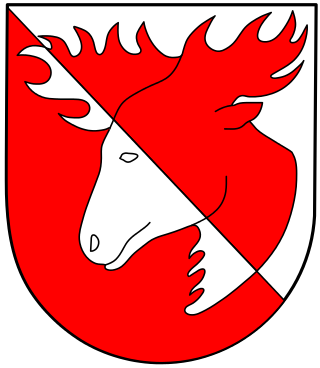| II Army Corps | |
|---|---|
| II. Armeekorps | |
| Active | April 1935 – 8 May 1945 |
| Country | |
| Branch | Army |
| Size | Corps |
| Engagements | World War II |
II Army Corps (II. Armeekorps) was a corps in the German Army during World War II.
| II Army Corps | |
|---|---|
| II. Armeekorps | |
| Active | April 1935 – 8 May 1945 |
| Country | |
| Branch | Army |
| Size | Corps |
| Engagements | World War II |
II Army Corps (II. Armeekorps) was a corps in the German Army during World War II.
Organisation of the corps at different times included; [1] [2] [3]

The German 73rd Infantry Division or in German 73. Infanterie-Division was a German military unit which served during World War II. The division consisted of more than 10,000 soldiers, primarily of the infantry branch, with supporting artillery. The division was only semi-motorized and relied on marching for the infantry units and horse-drawn transport for most of the support equipment, especially the artillery.

The 91st Air Landing Division was a German Army infantry division in World War II.
The XXVIII Army Corps was a corps which served in Nazi Germany's Wehrmacht during World War II. The corps was created on May 20, 1940 in Wehrkreis III. During the war, the corps was subordinated to the German 6th, 16th, 18th, and 3rd Panzer Armies. In 1945, the corps was briefly named Armeeabteilung Samland. The corps fought in Samland until annihilated in late April 1945.

The 161 Infantry Division was a major unit of the German Wehrmacht. It fought in the Battle of France, and then later on in the Eastern Front.

The 6th Infantry Division was a unit of the German Army during World War II.

The 121st Infantry Division was a German Wehrmacht division in World War II. It was a part of the German XXVIII Army Corps. In September 1941 the formation, on arriving in Pavlovsk, Saint Petersburg; engaged in the siege of Leningrad. By October 1941 it was down to 40% of its authorized strength and 3 infantry battalions had to be disbanded due to high casualties. In 1944 it was involved in the retreat from Leningrad through the Baltic states wherein it fought in the Battle of Pskov. It remained in the Courland pocket until the end of the war.
This is an order of battle of the French and German Armies at the beginning of the Franco-Prussian War in 1870.

The 32nd Infantry Division of the German Army was mobilized on 1 August 1939 for the upcoming invasion of Poland. At that time, it consisted of the usual German infantry division elements: three infantry regiments of three battalions each, one three-battalion regiment of light artillery, one battalion of heavy artillery, a Panzerjäger (anti-tank) Battalion, a reconnaissance (Aufklärungs) Battalion, a Signals Battalion, a Pioneer (Engineer) Battalion, and divisional supply, medical, and administrative units.

The 83rd Infantry Division,, was a German reserve and security formation during World War II.

The 76th Infantry Division was created on 26 August 1939 together with the 23rd Infantry Division in Potsdam.

The 25th Infantry Division was a military unit of the German Wehrmacht. It was later reclassified to 25th Motorized Infantry Division, and in June 1943 to the 25th Panzergrenadier Division.
The 101st Jäger Division was a light infantry Division of the German Army in World War II. It was formed in July 1942 by the redesignation of the 101st (Light) Infantry Division, which was itself formed in December 1940. The Walloon Legion was briefly attached to this division from December 1941 to January 1942. The Division took part in the Battle of Kharkov, the Battle of the Caucasus, and the retreat into the Kuban, where it suffered heavy losses fighting both the Red Army and partisans. The division was then involved in the battles in the Kuban bridgehead before being evacuated. The 101st was subsequently transferred to the lower Dnieper River in late 1943. It was part of the 1st Panzer Army that was surrounded in March 1944; it formed the rear guard for the XLVI Panzer Corps during the breakout of the Kamenets-Podolsky pocket. The division then retreated across Ukraine. In October 1944, it was moved to Slovakia and took part in the Battle of the Dukla Pass.

The 45th Infantry Division was an infantry division of the army of Nazi Germany during World War II. Towards the end of the war, the division was reassembled into a second iteration, the 45th Volksgrenadier Division

The 319th Static Infantry Division was a German Army static division during World War II. It was raised in November 1940 from units of the 87th, 169th and the 299th Infantry Divisions. On 30 April 1941 the 319th Division replaced the 216th Infantry Division in the Channel Islands defense and remained in that position until its capture in May 1945 by British forces.

The 30th Infantry Division of the Wehrmacht was created on 1 October 1936 in Lübeck and mobilized on 26 August 1939 for the upcoming invasion of Poland. At that time, it consisted of the usual German infantry division elements: three infantry regiments of three battalions each, one three-battalion regiment of light artillery, one battalion of heavy artillery, a panzerjager (anti-tank) battalion, an aufklärungs (reconnaissance) battalion, a signals battalion, a pioneer (engineer) battalion, and divisional supply, medical, and administrative units.

The 11th Infantry Division was an infantry division of the Wehrmacht that was initially founded as a cover formation during the Reichswehr era. It was active from 1934 to 1945.

The 15th Infantry Division was an infantry division of the German Army during the interwar period and World War II, active from 1934 to 1945.

The 34th Infantry Division,, was a German military unit that fought in the Battle of France and on the Eastern Front during World War II. The division was first formed following the expansion of the army under Adolf Hitler's leadership, but finally disbanded following their surrender to the Americans in Italy.

The 81st Infantry Division was an infantry division of the German Army during World War II. It was active from 1939 until 1945 and served primarily on the Eastern Front.
The 290th Infantry Division was a German infantry division in World War II. It was formed in the Munster Training Area in Wehrkreis X on 6 February 1940 and surrendered to Soviet forces at the end of the war as part of Army Group Courland.
{{cite book}}: CS1 maint: location missing publisher (link){{cite book}}: CS1 maint: others (link)